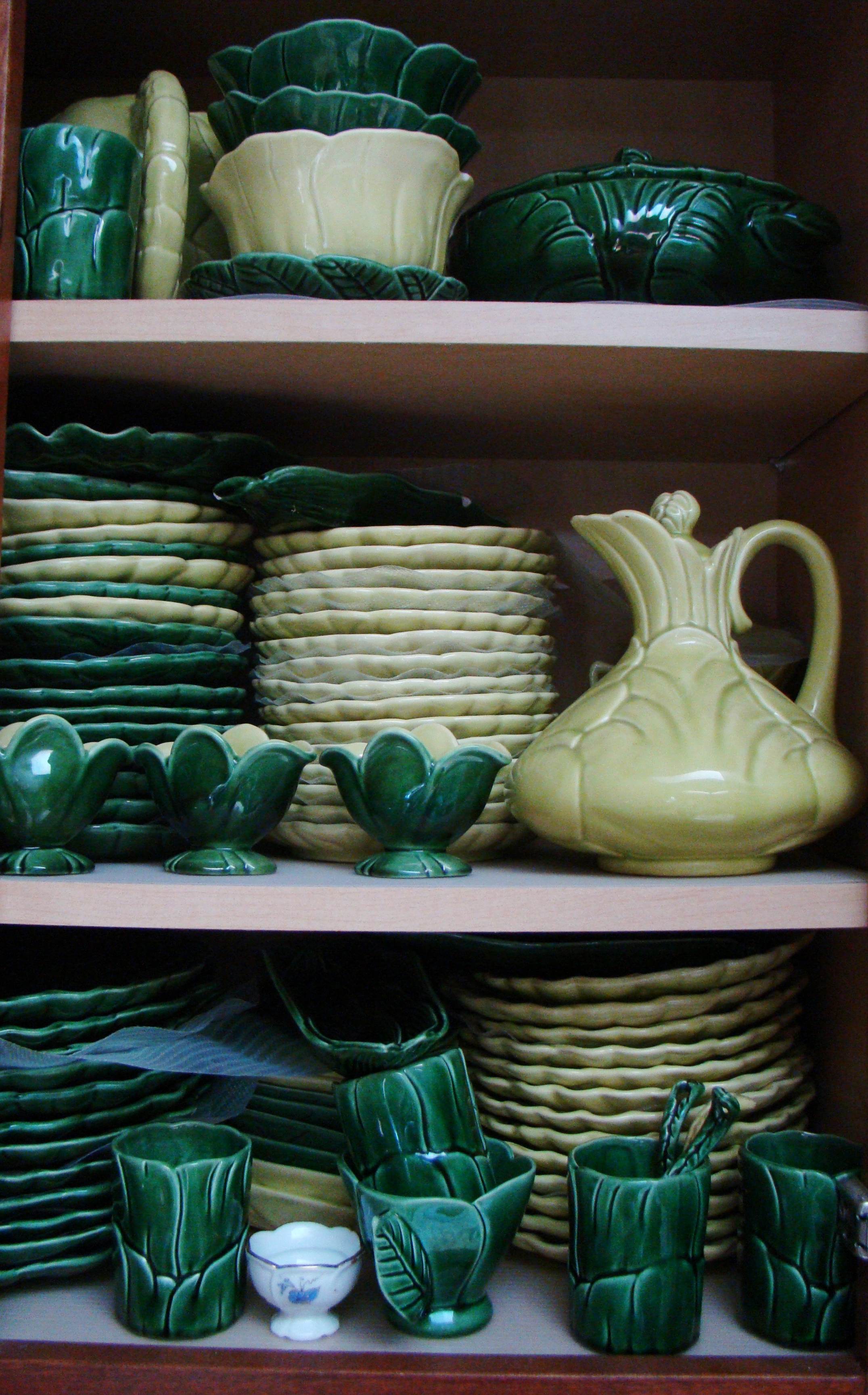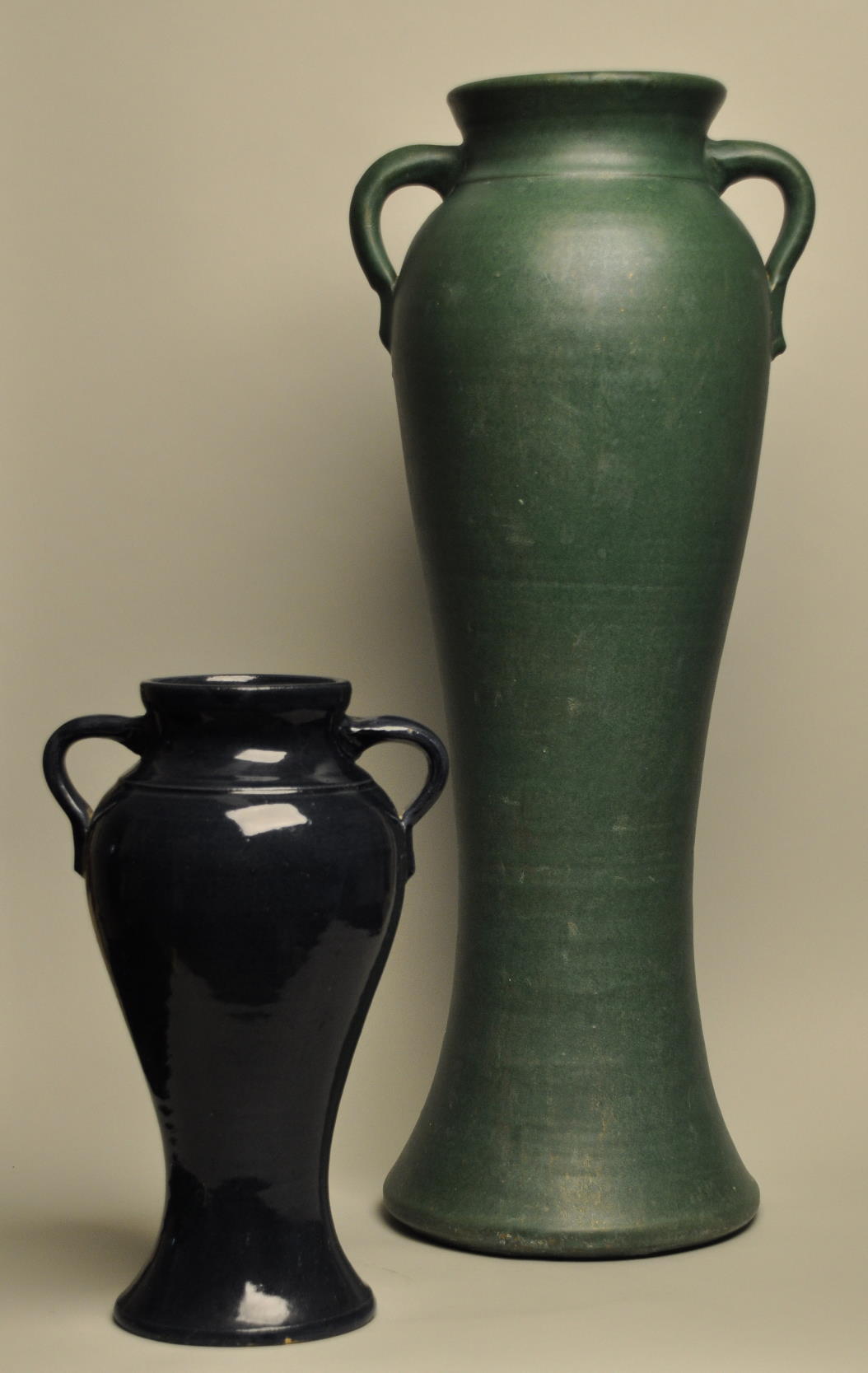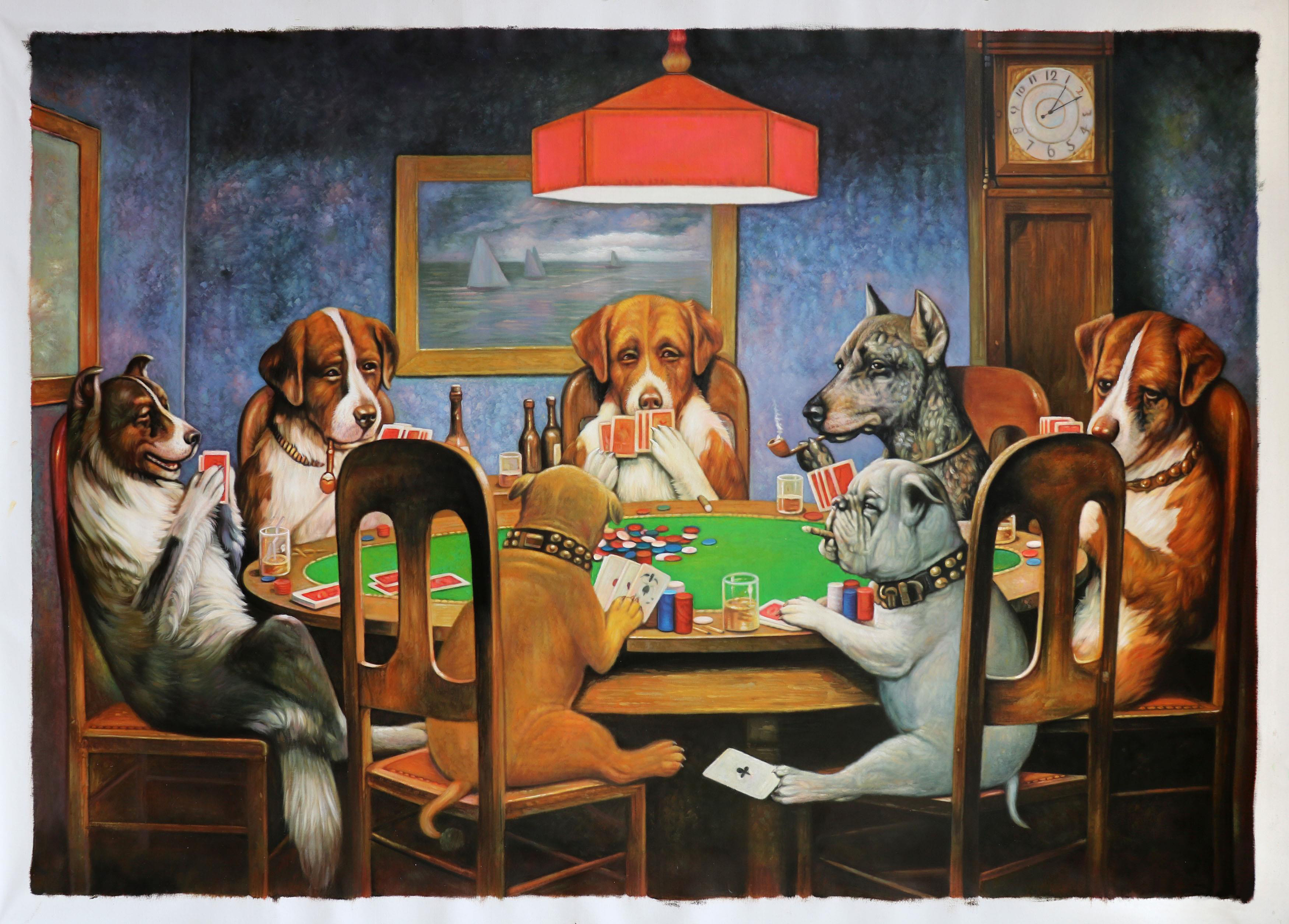|
Cemar Clay Products
Cemar Clay Products was a California pottery operating between 1935 and 1955. Cemar's art pottery products, including tableware, are sought-after collectables today. History Cemar was founded by Cliff J. Malone and Paul Cauldwell, two former employees of the well-established (J.A.) Bauer Pottery. Cemar Pottery, like Bauer, was based in Los Angeles, California. Cemar was part of the larger boom in California pottery during the World War II era when pottery imports from Asia were restricted or banned; a variety of potteries operated in California to keep up with domestic demand. Cemar was one of 13 members of the California Pottery Guild in 1952. Cemar's products include giftware, tableware, and garden pottery. Many of Cemar's designs were created by potter Fred Kaye. Many items feature vegetable or fruit designs, or animal designs. Cemar products were produced in many novelty forms, including pineapple-shaped dinnerware. Items were priced at a somewhat higher-end for casual china, ... [...More Info...] [...Related Items...] OR: [Wikipedia] [Google] [Baidu] |
Bauer Pottery
J.A. Bauer Pottery is an American pottery that was founded in Paducah, Kentucky in 1895 and operated for most of its life in Los Angeles, California. It closed in 1962. History In 1885, John Andrew "Andy" Bauer bought out Frank Parham's Paducah Pottery in Paducah, Kentucky, a pottery whose main products were brown-glazed, hand-thrown wares including crocks and jugs. J.A. Bauer moved his family to Los Angeles in early 1909, and selected a new site for a pottery. J.A. Bauer Pottery Company was built at 415-421 West Avenue 33 in Lincoln Heights, an area between Los Angeles and Pasadena, California. The first products were the same products J.A. Bauer produced in Paducah. Demand from the nursery trade added new products to the pottery's wares including flower pots, garden ware, and planters. Louis Ipsen was hired around 1912 as a designer, adding fancy redware items to the pottery lines. Matterson (Matt) Carlton, an accomplished turner, joined the company producing hand-thrown ... [...More Info...] [...Related Items...] OR: [Wikipedia] [Google] [Baidu] |
Los Angeles, California
Los Angeles ( ; es, Los Ángeles, link=no , ), often referred to by its initials L.A., is the largest city in the state of California and the second most populous city in the United States after New York City, as well as one of the world's most populous megacities. Los Angeles is the commercial, financial, and cultural center of Southern California. With a population of roughly 3.9 million residents within the city limits , Los Angeles is known for its Mediterranean climate, ethnic and cultural diversity, being the home of the Hollywood film industry, and its sprawling metropolitan area. The city of Los Angeles lies in a basin in Southern California adjacent to the Pacific Ocean in the west and extending through the Santa Monica Mountains and north into the San Fernando Valley, with the city bordering the San Gabriel Valley to it's east. It covers about , and is the county seat of Los Angeles County, which is the most populous county in the United States with an estim ... [...More Info...] [...Related Items...] OR: [Wikipedia] [Google] [Baidu] |
California Pottery
California pottery includes industrial, commercial, and decorative pottery produced in the Northern California and Southern California regions of the U.S. state of California. Production includes brick, sewer pipe, architectural terra cotta, tile, garden ware, tableware, kitchenware, art ware, figurines, giftware, and ceramics for industrial use. Ceramics include terra cotta, earthenware, porcelain, and stoneware products. Key milestones in the history of California pottery include: the arrival of Spanish settlers, the advent of Statehood and subsequent population growth, the arts and crafts movement, Great Depression, World War II era and the post-WWII onslaught of low-priced imports leading to a steep decline in the number of California potteries. California potters large and small have left a legacy of tableware design, collectibles, art, and architecture. History Tile has been a favorite building material in California since the early Spanish settled the area and brou ... [...More Info...] [...Related Items...] OR: [Wikipedia] [Google] [Baidu] |
Better Homes And Gardens (magazine)
''Better Homes and Gardens'' is the fourth best selling magazine in the United States. The editor in chief is Stephen Orr. ''Better Homes and Gardens'' focuses on interests regarding homes, cooking, gardening, crafts, healthy living, decorating, and entertaining. The magazine is published 12 times per year by Dotdash Meredith. It was founded in 1922 by Edwin Meredith, who had previously been the United States Secretary of Agriculture under Woodrow Wilson. The original name was Fruit, Garden and Home from 1922 to 1924. The name was changed to Better Homes and Gardens beginning with the August 1924 issue. ''Better Homes and Gardens'' is one of the " Seven Sisters", a group of women's service magazines. Brand extension The Meredith Corporation publishes a number of books on home economics and gardening under the BH&G brand, the best known of which is the ''Better Homes and Gardens New Cook Book'', colloquially known as the "''Red Plaid''" book. Now in its 15th edition (published ... [...More Info...] [...Related Items...] OR: [Wikipedia] [Google] [Baidu] |
House Beautiful
''House Beautiful'' is an interior decorating magazine that focuses on decorating and the domestic arts. First published in 1896, it is currently published by the Hearst Corporation, who began publishing it in 1934. It is the oldest still-published magazine in what is known as the "shelter magazine" genre. The magazine was launched in the United Kingdom in the early 1950s, positioned for young 'home-makers.' It is still sold in the UK, where it has a circulation of 93,992. Editors * Eugene Klapp and Henry B. Harvey (1896–1897) * Eugene Klapp (1897–1898) * Herbert S. Stone (1898–1913) * Virginia Huntington Robie (1913–1915) * Mabel Kent (1915–1916) * Grace Atkinson Kimball (1916–1918) * Mabel Rollins (1918–1920) * Charlotte Lewis (1921) * Ellery Sedgwick (1922) * Ethel B. Power (1923–1934) * Arthur H. Samuels (1934–1936) * Kenneth K. Stowell (1936–1941) * Elizabeth Gordon (1941–1964) * Sarah Tomerlin Lee (1965–1969) * Wallace Guenther (1969–1977) * Do ... [...More Info...] [...Related Items...] OR: [Wikipedia] [Google] [Baidu] |
The American Home
''The American Home'' was a monthly magazine published in the United States from 1928 to 1977. Its subjects included domestic architecture, interior design, landscape design and gardening."American Home", Library of Congress Catalog. History and profile ''The American Home'' was a continuation of the magazine ''Garden & Home Builder''. It was published by Nelson Doubleday of Doubleday, Doran & Company. Ellen Diffin Wangner edited the first issues, October 1928 to March 1929. ''The American Home'' lost money its first four years, and occasionally entire issues were omitted. After several years of losses, and in an era that saw the closure of the mass circulation magazines '' Life (magazine), Life'', '' Look'', and ''The Saturday Evening Post'', the last issue of ''American Home'', with a cover date of February 1978, was published in late 1977. It was then merged with the Charter magazine ''Redbook''. See also * Leda Sanford Leda Sanford, (born October 11, 1933 in Lucca, Ital ... [...More Info...] [...Related Items...] OR: [Wikipedia] [Google] [Baidu] |
Retro Style
Retro style is imitative or consciously derivative of lifestyles, trends, or art forms from history, including in music, modes, fashions, or attitudes. In popular culture, the "nostalgia cycle" is typically for the two decades that begin 20–30 years ago. Definition The term ''retro'' has been in use since 1972 to describe on the one hand, new artifacts that self-consciously refer to particular modes, motifs, techniques, and materials of the past. But on the other hand, many people use the term to categorize styles that have been created in the past. Retro style refers to new things that display characteristics of the past. Unlike the historicism of the Romantic generations, it is mostly the recent past that retro seeks to recapitulate, focusing on the products, fashions, and artistic styles produced since the Industrial Revolution, the successive styles of Modernity. The English word ''retro'' derives from the Latin prefix ''retro'', meaning backwards, or in past times. In Fra ... [...More Info...] [...Related Items...] OR: [Wikipedia] [Google] [Baidu] |
Earthenware
Earthenware is glazed or unglazed nonvitreous pottery that has normally been fired below . Basic earthenware, often called terracotta, absorbs liquids such as water. However, earthenware can be made impervious to liquids by coating it with a ceramic glaze, which the great majority of modern domestic earthenware has. The main other important types of pottery are porcelain, bone china, and stoneware, all fired at high enough temperatures to vitrify. Earthenware comprises "most building bricks, nearly all European pottery up to the seventeenth century, most of the wares of Egypt, Persia and the near East; Greek, Roman and Mediterranean, and some of the Chinese; and the fine earthenware which forms the greater part of our tableware today" ("today" being 1962).Dora Billington, ''The Technique of Pottery'', London: B.T.Batsford, 1962 Pit fired earthenware dates back to as early as 29,000–25,000 BC, and for millennia, only earthenware pottery was made, with stoneware graduall ... [...More Info...] [...Related Items...] OR: [Wikipedia] [Google] [Baidu] |
Kitsch
Kitsch ( ; loanword from German) is a term applied to art and design that is perceived as naïve imitation, overly-eccentric, gratuitous, or of banal taste. The avant-garde opposed kitsch as melodramatic and superficial affiliation with the human condition and its natural standards of beauty. In the first half of the 20th century, kitsch referred to products of pop culture that lacked the depth of fine art. However, since the emergence of Pop Art in the 1950s, kitsch is sometimes re-appreciated in knowingly ironic, humorous or earnest fashion. To brand visual art as "kitsch" is often still pejorative, though not exclusively. Art deemed kitsch may be enjoyed in an entirely positive and sincere manner. For example, it carries the ability to be quaint or "quirky" without being offensive on the surface, as in the ''Dogs Playing Poker'' paintings. Kitsch can refer to music, literature, or any work, and relates to camp, as they both incorporate irony and extravagance. Hi ... [...More Info...] [...Related Items...] OR: [Wikipedia] [Google] [Baidu] |
Retro Style
Retro style is imitative or consciously derivative of lifestyles, trends, or art forms from history, including in music, modes, fashions, or attitudes. In popular culture, the "nostalgia cycle" is typically for the two decades that begin 20–30 years ago. Definition The term ''retro'' has been in use since 1972 to describe on the one hand, new artifacts that self-consciously refer to particular modes, motifs, techniques, and materials of the past. But on the other hand, many people use the term to categorize styles that have been created in the past. Retro style refers to new things that display characteristics of the past. Unlike the historicism of the Romantic generations, it is mostly the recent past that retro seeks to recapitulate, focusing on the products, fashions, and artistic styles produced since the Industrial Revolution, the successive styles of Modernity. The English word ''retro'' derives from the Latin prefix ''retro'', meaning backwards, or in past times. In Fra ... [...More Info...] [...Related Items...] OR: [Wikipedia] [Google] [Baidu] |
Ceramics Manufacturers Of The United States
A ceramic is any of the various hard, brittle, heat-resistant and corrosion-resistant materials made by shaping and then firing an inorganic, nonmetallic material, such as clay, at a high temperature. Common examples are earthenware, porcelain, and brick. The earliest ceramics made by humans were pottery objects (''pots,'' ''vessels or vases'') or figurines made from clay, either by itself or mixed with other materials like silica, hardened and sintered in fire. Later, ceramics were glazed and fired to create smooth, colored surfaces, decreasing porosity through the use of glassy, amorphous ceramic coatings on top of the crystalline ceramic substrates. Ceramics now include domestic, industrial and building products, as well as a wide range of materials developed for use in advanced ceramic engineering, such as in semiconductors. The word "''ceramic''" comes from the Greek word (), "of pottery" or "for pottery", from (), "potter's clay, tile, pottery". The earliest known men ... [...More Info...] [...Related Items...] OR: [Wikipedia] [Google] [Baidu] |







